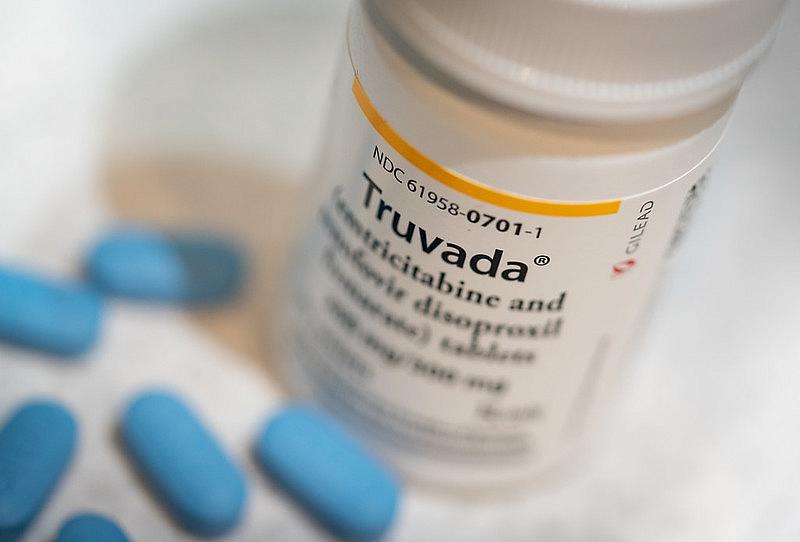Will new Calif. law encourage more men of color to use HIV prevention medication?
Pre-exposure prophylaxis or PrEP is a rapidly emerging prevention strategy for people at high risk of HIV. It’s been proven greater than 99% effective in preventing the transmission of HIV from an HIV positive partner when taken as directed.
But data from the U.S. Centers for Disease Control (CDC) has shown that only a small percentage of Americans who could benefit from the pill are using it, and there are big racial and geographic disparities in PrEP access and use. Black and Latino men are even less likely to use the pill, and HIV prevalence among these groups is up to six times higher than among white gay and bisexual men across the United States. The vast majority of PrEP users are men who have sex with men or otherwise identify as gay or bisexual.
Anecdotally, the disparities in use are driven by greater stigma around same-sex relations and disease, and the lack of medical professionals who project sex-positive attitudes. Both of these roadblocks can prevent young men from even asking for PrEP. If they do ask for PrEP, they can be rejected by doctors who don’t want to give a “get out of HIV free card” — a license for a patient to practice unsafe sex. These roadblocks, again, anecdotally, are greatest in communities of color. While issues of stigma and sex-negativity among doctors are difficult to quantify, it is possible to determine the gap between need and access to PrEP and estimate how a new California law could close this gap.
The law taking effect January 1 could be a game-changer in expanding PrEP access and use. Senate Bill 159 will allow Californians to purchase a one-time 60-day supply of the PrEP drug Truvada at pharmacies without a prescription. If they want to go on PrEP long-term, the pharmacist will provide a referral to a physician or clinic that provides HIV prevention. The idea behind this law is to encourage at-risk men to access these preventative meds without waiting for a doctor’s appointment. And it could put allow pharmacists to provide a crucial link to care, especially for populations without access to primary care physicians, or without access to doctors who are well-versed in PrEP. Pharmacies are easily accessible, and pharmacists are often available without an appointment. Because pharmacies and pharmacists usually are not linked to specific health conditions, the setting is considered largely free of HIV-related stigma.
For those living in areas underserved by physicians willing to write prescriptions for PrEP, pharmacies could, in theory, be a lifeline for at-risk men. But the success of this law will depend on how many potential PrEP users know about it, and how many pharmacists are willing to opt-in to the new law — SB 159 doesn’t require them to sell PrEP — and educate themselves about its use.
In conjunction with the rollout of this law, I plan to answer some questions as part of the 2019 Data Fellowship. One, where are the gaps in PrEP access right now? Two, where are the areas in California where pharmacies could fill those gaps? Three, what are the challenges in expanding PrEP usage — in other words, what areas have a low concentration of PrEP use and a low concentration of pharmacies? And finally, I’ll look at how well pharmacies are filling the gaps with the implementation of SB 159, using preliminary data on PrEP sales in pharmacies after January 1.
I’ve compiled a list of key data sources that can illuminate where the disparities exist in California to obtain a clearer picture of how available PrEP is throughout California right now, where the lowest concentration of providers are, and how pharmacies might fill those gaps. These include PrEP provider databases and PrEP usage data from the CDC, and HIV diagnosis statistics from the California Department of Public Health.
This data project could create a baseline for PrEP access in California right now and suggest whether pharmacies are narrowing the access gap in underserved communities. This understanding could serve both the state in targeting areas with the greatest need for pharmacists to opt-in to providing PrEP. And it could assist local HIV/AIDS and LGBTQ groups throughout the state in educating gay and bisexual men, especially men of color, about the increased availability of PrEP.
As part of this reporting project, I’ll team with HIV/AIDS advocacy organizations — particularly those serving communities of color — to create Facebook and Instagram sites, and work with these groups to tell the stories of black and Latino men who have sex with men who are and are not on PrEP. The idea is to use social media platforms to connect young at-risk men and pharmacies. In effect, this could be, at least in California, a chance to get outreach right, using more culturally and geographically targeted methods.


